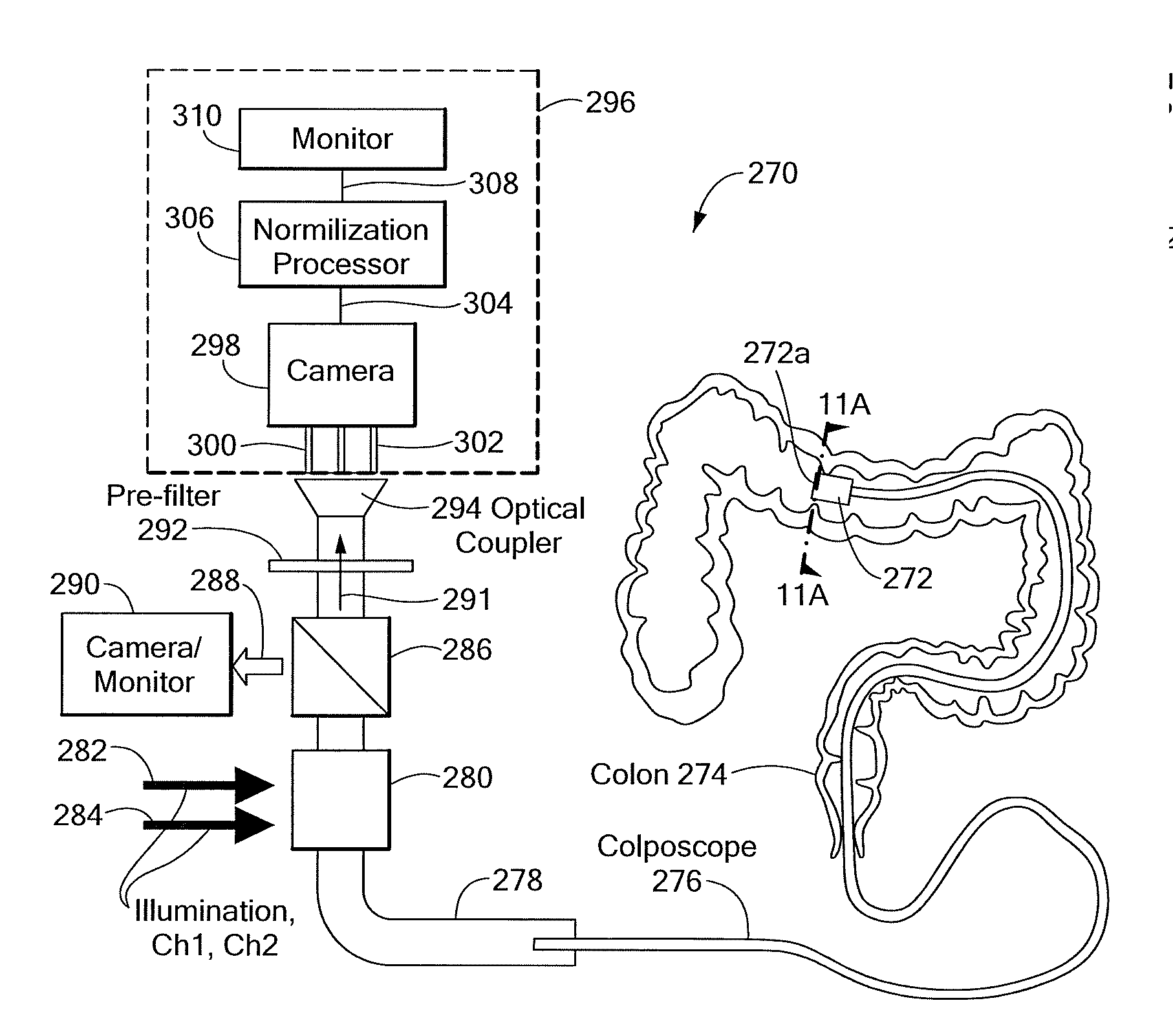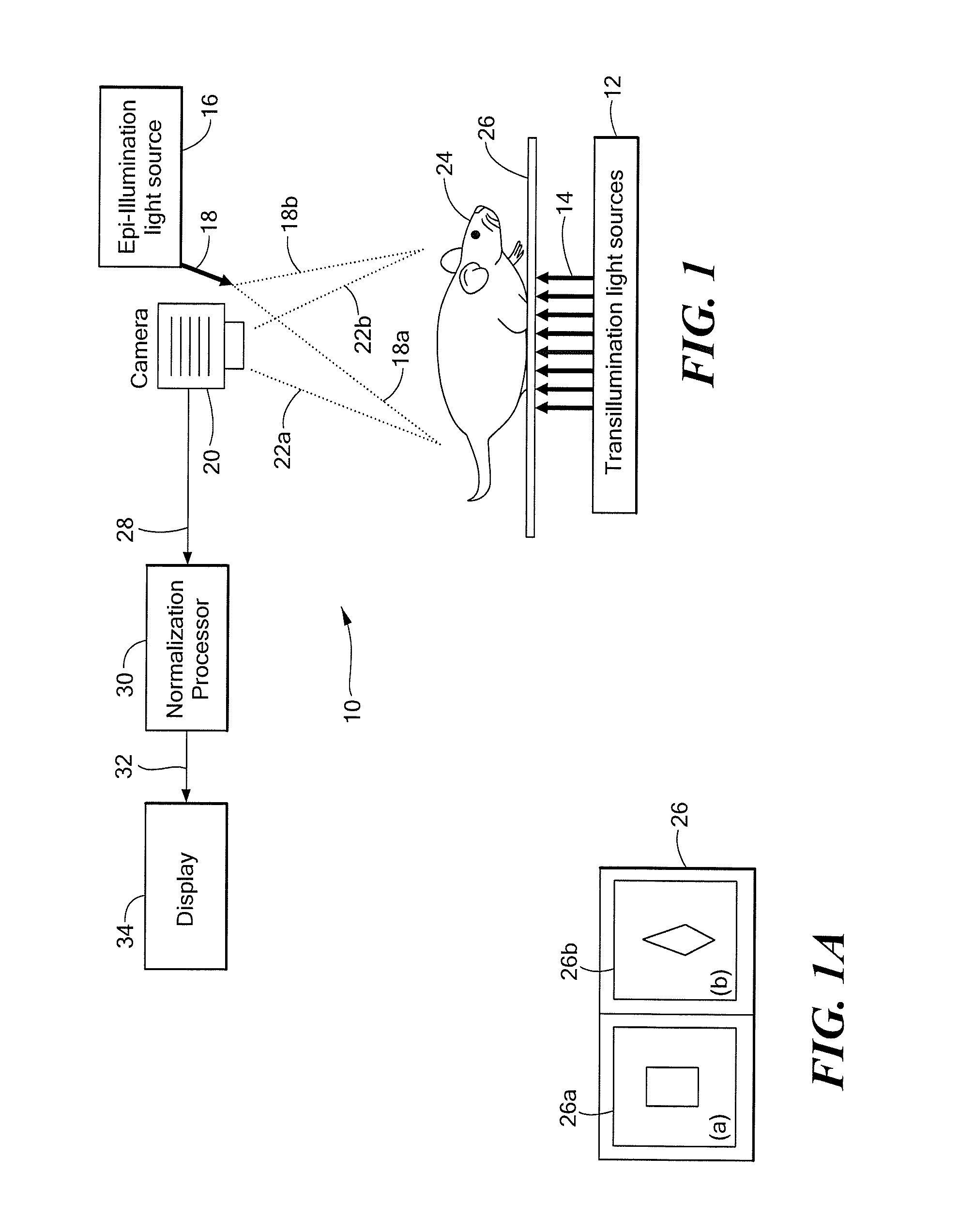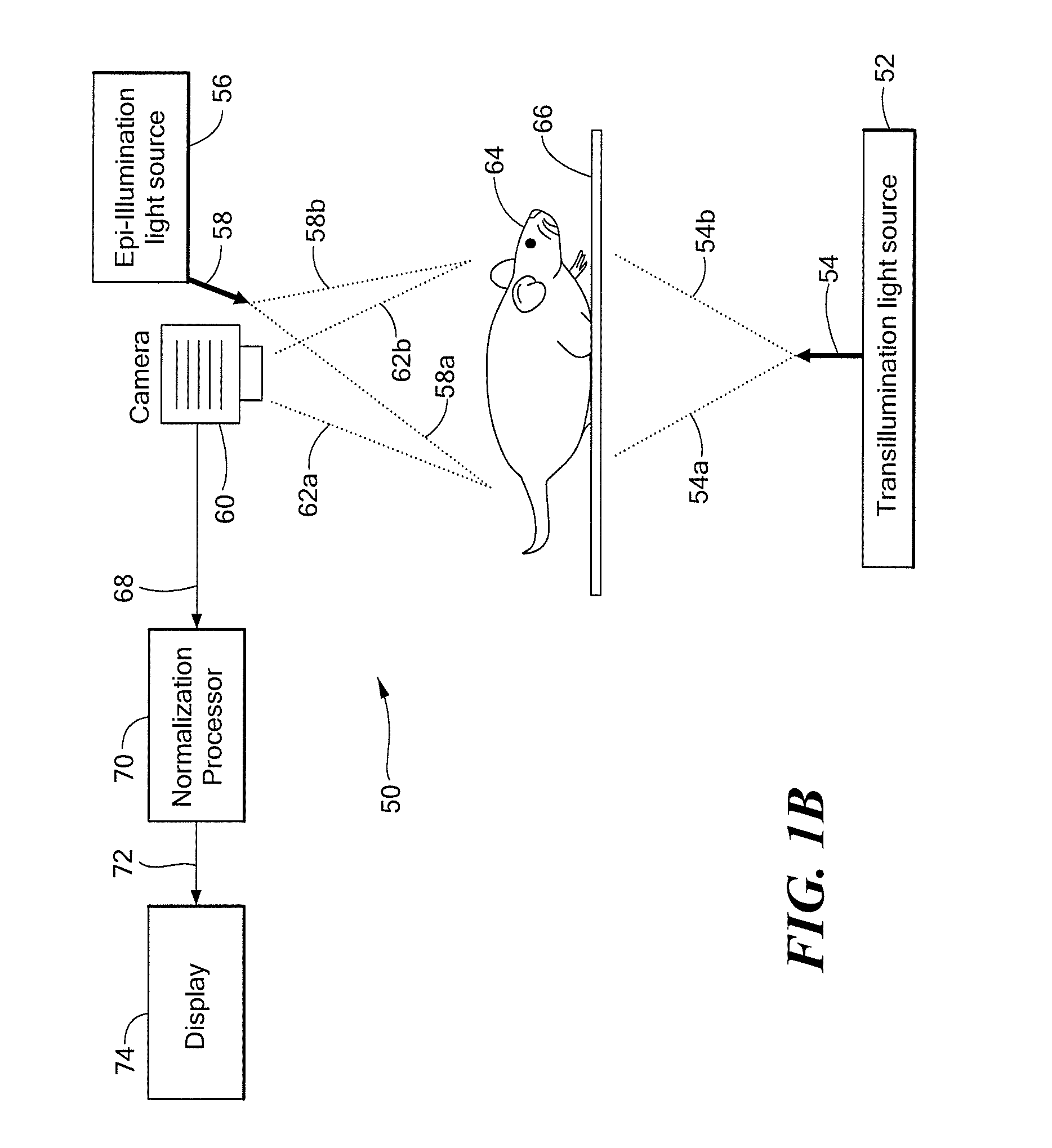System and Method for Normalized Diffuse Emission Epi-illumination Imaging and Normalized Diffuse Emission Transillumination Imaging
a diffuse emission and imaging system technology, applied in the field of medical imaging, can solve problems such as generating an un-normalized emitted light image of the tissue, and achieve the effect of improving images
- Summary
- Abstract
- Description
- Claims
- Application Information
AI Technical Summary
Benefits of technology
Problems solved by technology
Method used
Image
Examples
Embodiment Construction
[0048]Before describing the imaging system and method, some introductory concepts and terminology are explained. As used herein, the term “phantom” is used to describe a test object being imaged. A phantom is typically an article having diffuse light propagation characteristics similar to living tissue, for example, a piece of appropriately engineered resin block. For another example, a phantom can be a vial, which contains cells having fluorescent proteins therein, i.e. a fluorescent marker or a fluorochrome.
[0049]As used herein, the term “excitation light” is used to describe light generated by an “excitation light source” that is incident upon a biological tissue. The excitation light can interact with the tissue, and can be received by a light detector (e.g., a camera), at the same wavelength (excitation wavelength) as that at which it was transmitted by the excitation light source. The excitation light can be monochromatic, or it can cover a broader spectrum, for example, white...
PUM
 Login to View More
Login to View More Abstract
Description
Claims
Application Information
 Login to View More
Login to View More - R&D
- Intellectual Property
- Life Sciences
- Materials
- Tech Scout
- Unparalleled Data Quality
- Higher Quality Content
- 60% Fewer Hallucinations
Browse by: Latest US Patents, China's latest patents, Technical Efficacy Thesaurus, Application Domain, Technology Topic, Popular Technical Reports.
© 2025 PatSnap. All rights reserved.Legal|Privacy policy|Modern Slavery Act Transparency Statement|Sitemap|About US| Contact US: help@patsnap.com



